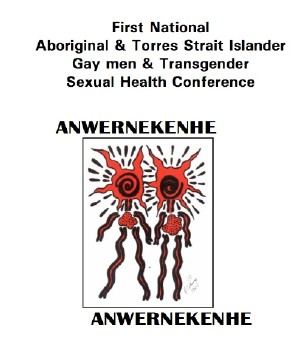 |
This historic conference
was held at Hamilton Downs, 75km north-west of Alice
Springs in Australia's Northern Territory from Sunday
31st October to Friday 4th November, 1994. It is
believed to be the first forum of its kind to be held
anywhere in the world. A total of 66 Aboriginal and
Islander gay men and transgenders nationally attended to
be part of this initiative. The conference represented a
long term ambition by a group of particularly dedicated
young Aboriginal men who believed strongly enough in a
dream to be able to bring it to fruition.
Following a meeting of national HIV/AIDS educators in Sydney in April 1994, John Cross, the Gay Men's Peer Educator from Central Australian Aboriginal Congress (Alice Springs) with the assistance of the writer, (men's educator/counsellor from the AIDS Council of Central Australia, Alice Springs) collaborated on a submission to the Commonwealth Department of Human Services & Health for funding. This submission outlined their aims, objectives, rationale and projected outcomes from the conference. They were successful in their submission with the Department supplying $35 000 towards costs. John also managed to successfully negotiate with some of the state and territory governments to allocate a portion of their Aboriginal dedicated health department funding to assist with transporting participants from their state or territory to the Alice Springs area. A list of the participants and support team appears elsewhere in this report along with some demographic data which assisted in the evaluation. |